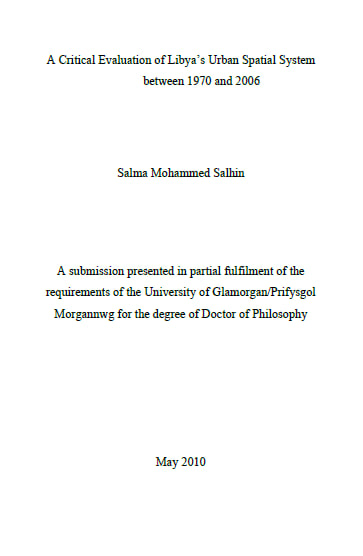A Critical Evaluation of Libya’s Urban Spatial System between 1970 and 2006
Salma Mohammed Salhin
A
submission presented in partial fulfilment of the requirements of the
University of Glamorgan/Prifysgol Morgannwg for the degree of Doctor
of Philosophy
May 2010
Abstract
In
Libya, rural-urban migration and rapid population growth were
intensified by the discovery of oil and brought the polarization by the
big cities. This polarization has become a major issue of problems
within the urban spatial planning, particularly in the case of Tripoli
and Benghazi. In order to resolve these, the Libyan government had since
attempted various efforts to alleviate these urban pressures through
both indirect national policies and explicit spatial development
strategies. The aim of the study is therefore to produce a critical
evaluation of Libyan spatial policies by the government between 1970s
and 2006 and to offer insights into how Libya could benefit from a
balanced urban system. Both secondary and primary data were explored.
This
research has identified some merits of a number of spatial policies by
the government as well as some major issues and weaknesses of these
polices. Although government policies did have some effects in reducing
the polarization by the two large cities, the issue of over dominance
and the consequent urban problems still largely remained the same.
download




